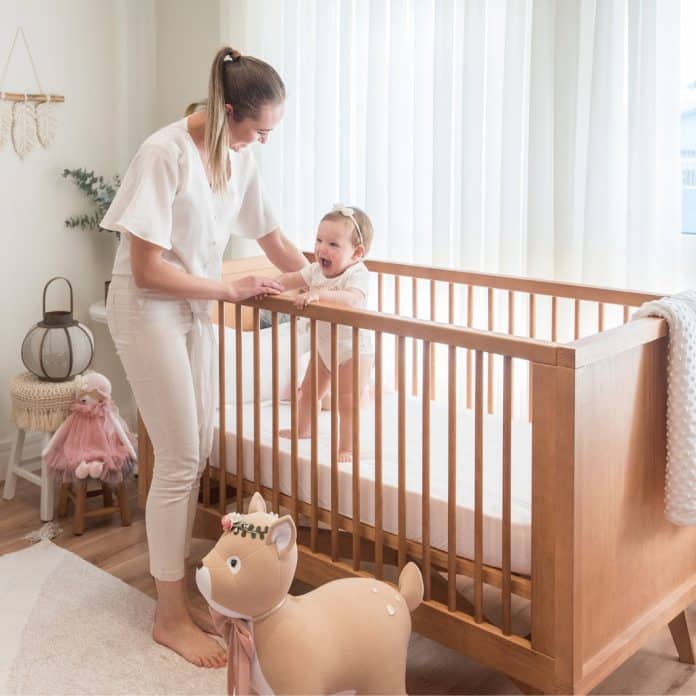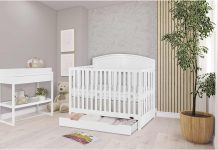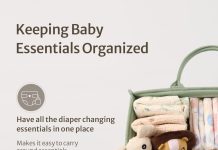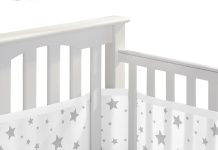Are you a new parent or caregiver wondering if a pack and play can be a suitable substitute for a crib? Well, wonder no more! In this article, we will explore the question of whether a pack and play can be used as an alternative to a traditional crib. We’ll discuss the benefits and potential drawbacks of using a pack and play, providing you with the information you need to make an informed decision for your little one’s sleeping arrangement. So, read on to learn more about the compatibility of pack and plays and cribs.
Review contents
Safety Considerations
Weight Limits
When considering using a pack and play instead of a crib, it is important to take into account weight limits. Pack and plays typically have weight limits that vary depending on the model. It is important to ensure that the weight of your child is well within the stated limit to avoid any safety risks.
Stability
Another safety consideration when using a pack and play is its stability. Make sure that the pack and play you choose is sturdy and stable, with secure locking mechanisms to prevent any accidental collapses. Prioritize pack and plays with a solid base and reinforced corners for added stability.
Bar Spacing
Bar spacing is an essential safety consideration for pack and plays. The gaps between the bars should be narrow enough to prevent your child from slipping through or getting their head stuck. Ensure that the bar spacing is compliant with safety standards to provide a secure environment for your little one.
Mesh Sides
Pack and plays often come with mesh sides, which serve both safety and convenience purposes. The mesh sides allow for proper ventilation and airflow, reducing the risk of suffocation. It also allows parents to easily monitor their child while providing a secure and comfortable space for them to sleep or play.
Mattress Safety
When using a pack and play, it is crucial to ensure that the mattress provided is firm and fits snugly within the playard. Avoid using additional padding or soft bedding that could pose a suffocation hazard. Following the manufacturer’s guidelines for mattress safety is essential to protect your baby while they sleep or play.
Height Adjustment
Some pack and plays feature adjustable heights, allowing you to raise or lower the mattress base to different positions. This feature is particularly useful for parents who may have difficulty bending over or for those who want to have their baby closer to them during the early months. Just make sure that the height adjustment mechanism is secure and easy to use.
Comfort and Convenience
Portability
One of the greatest advantages of using a pack and play as an alternative to a crib is its portability. Pack and plays are lightweight and compact, making them ideal for families who frequently travel or need a portable sleeping solution for their baby. They can be easily folded and stored or transported in a carrying case.
Adjustable Features
Many pack and plays come with adjustable features that enhance comfort for both parents and babies. Some models have a removable bassinet insert that allows newborns to sleep at a higher level, making it easier for parents to reach them. Others may feature a changing table attachment, making diaper changes more convenient.
Storage
Another convenient aspect of pack and plays is the availability of storage options. Some models include storage pockets or shelves where you can keep essential baby items close at hand. This feature comes in handy for storing diapers, wipes, toys, or even extra bedding without the need for additional furniture in your nursery.
Versatility
Pack and plays are versatile baby products that can serve multiple purposes. In addition to being a safe sleeping space for your child, they can also be used as a playpen during the day or a secure area for your child to explore and enjoy. This versatility makes pack and plays a valuable investment for parents seeking flexibility in their baby gear.
Cost
When comparing the cost of a pack and play to that of a crib, pack and plays tend to be more budget-friendly. They are generally less expensive than cribs, making them an attractive option for parents who are on a tight budget. However, it’s important to consider the long-term use and durability of the pack and play to ensure that it provides a safe and comfortable sleeping environment for your child.
Space Limitations
Size
One factor to consider when deciding between a pack and play and a crib is the size. Pack and plays are generally smaller in size compared to full-size cribs. This can be advantageous for parents who have limited space in their homes or need a temporary sleeping solution. However, if you have ample space, a larger crib may offer more room for your child to grow and move around comfortably.
Shape
Pack and plays typically have a rectangular shape, which may not fit well in irregularly-shaped or smaller rooms. Cribs, on the other hand, come in various shapes and sizes, allowing for more flexibility in room layout. Consider the shape of your room and how different baby furniture options will fit before making a decision.
Room Layout
The layout of your nursery or room is also an important consideration when deciding between a pack and play and a crib. If you plan to have other furniture or accessories in the room, such as a changing table or rocking chair, you’ll need to consider how these items will fit alongside the pack and play or crib. Take measurements and plan the layout to ensure a comfortable and functional space for both you and your baby.
Long-Term Use
Transition to Toddler Bed
Pack and plays are not designed for long-term use as a bed for older children. Most pack and plays have weight and height limits that make them suitable only for infants and young toddlers. If you’re looking for a sleeping solution that can grow with your child, a crib may be a better choice. Cribs can be converted into toddler beds or even full-size beds, providing a longer lifespan for your investment.
Durability
Durability is an important factor to consider when evaluating the long-term use of a pack and play. While they are generally made to withstand regular use and travel, it’s crucial to choose a sturdy and high-quality pack and play that will hold up over time. Look for reinforced stitching, strong materials, and a solid frame to ensure that the pack and play will last throughout your child’s early years.
Travel-Friendly
One of the major advantages of using a pack and play instead of a crib is its travel-friendliness. Pack and plays can be easily folded and transported, making them an excellent option for families who are always on the go. Whether you’re visiting relatives, going on vacation, or simply spending a night away from home, a pack and play provides a familiar and secure sleep environment for your baby.
Special Needs
For families with special needs or specific circumstances, a pack and play may offer unique advantages. If you have a child with medical needs who requires constant monitoring, a pack and play with mesh sides can provide a safe space while allowing you to keep an eye on them. Additionally, if you have limited mobility or physical challenges, the portability and adjustable features of a pack and play can make it easier to care for your baby.
Recommended Age Range
Pack and plays are generally suitable for newborns up to around 3 years old, depending on the weight and height limits of the specific model. While they can provide a safe sleeping space for infants, it’s important to assess your child’s developmental needs and consider whether they would benefit from the additional space and freedom of movement that a crib provides as they grow older.
Potential Alternatives
Portable Bassinet
A portable bassinet is another alternative to consider if you’re looking for a temporary sleeping solution for your baby. These compact and lightweight options provide a cozy and secure space for newborns and can be easily moved from room to room. However, like pack and plays, their use is limited to the early months of your baby’s life.
Co-Sleeper
A co-sleeper, also known as a bedside sleeper, is a popular choice for parents who want to have their baby close by during the night while still providing a separate sleeping space. These cribs attach securely to the side of your bed, ensuring easy access to your baby for nighttime feedings and comforting. Co-sleepers offer the benefits of both a crib and a pack and play, making them a versatile option for many families.
Convertible Crib
If you’re looking for a long-term solution that can grow with your child, a convertible crib may be the best choice. Convertible cribs can be transformed from a traditional crib into a toddler bed, daybed, or even a full-size bed. This versatility ensures that your investment in a crib will last well into your child’s teenage years, providing a familiar and comfortable sleep environment throughout their early life.
Conclusion
In conclusion, while a pack and play can serve as a convenient and practical alternative to a crib, there are several factors to consider before making a decision. Safety considerations, such as weight limits, stability, bar spacing, mesh sides, and mattress safety, should always be prioritized to ensure the well-being of your baby. Additionally, factors such as comfort and convenience, cost, space limitations, long-term use, travel-friendliness, special needs, recommended age range, and potential alternatives should be carefully evaluated based on your individual needs and circumstances. Consulting with a pediatrician and conducting thorough research on different models and brands can help you make an informed decision that will provide a secure and comfortable sleeping environment for your little one.






























